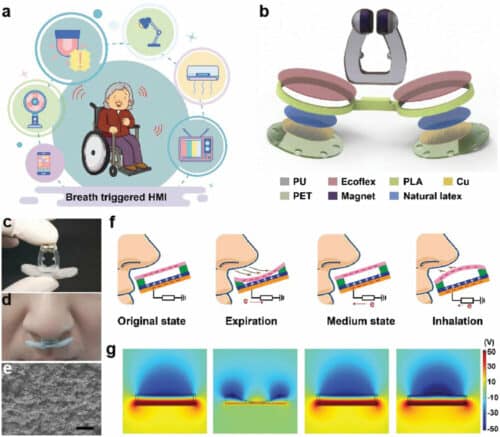A simple prototype gadget developed by Case Western Reserve University researchers allows users to manage “smart home” devices by altering their breathing patterns.

People with limited mobility or who have trouble speaking effectively may benefit from the self-powered device, which fits into the nostrils. Additionally, it can be set up to automatically notify medical staff when someone has a respiratory problem. The device’s research and development are being overseen by Changyong “Chase” Cao, an Assistant Professor of Mechanical and Aerospace Engineering. “We believe that having both of these capabilities–smart technology control and medical alert–in a small device makes this special,” He said.
Today, hundreds of consumer-ready appliances and devices are Bluetooth-enabled or integrated into the “Internet of Things”. Smart appliance and smart home technology together make up a quickly expanding business. Air conditioners, security systems, and lighting and energy management systems are examples of smart home appliances. They can be configured to operate independently or be controlled remotely. However, the advantages of smart technology are essentially inaccessible to people who are unable to talk or move their limbs to configure a device.
Smart technology is fantastic—but only if you can use it. “With our new design, everyone who can breathe would be able to operate gadgets, such as changing a thermostat’s settings or turning them on and off.” The gadget was created by Cao and his colleagues via a process called triboelectrification, also known as triboelectric nanogenerators (TENGs).
TENGs are capable of converting mechanical energy gathered from the environment into electricity for recharging consumer electronics or powering tiny devices like sensors. The method, which has been actively developed over the past ten years, enables researchers to transform routine mechanical energy into valuable electric power. Rain, wind, or even routine bodily activities like clasping hands, moving forward when walking, or in this instance, breathing, all contain that energy.
Because of its straightforward design and operation, the device, also known as a “breathing-driven Human-Machine Interface (HMI) system,” might be made accessible to the general public within three to five years, according to Cao. He stated that the group would continue to develop the prototype in the coming months.
Click here to access their research.






